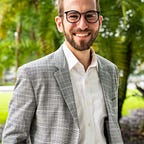Where there’s smoke, there’s fuel aridity.
Where there’s smoke, there’s fuel aridity. And, as evidenced by satellite images there has been no shortage of smoke in Northern and Southern California in the past year. So, what’s fuel aridity and how do we stop it and the fires it helps spark?
In a report titled, “Impact of anthropogenic climate change on wildfire across western US forests,” John Abatzoglou and Park Williams used eight metrics of forest dryness to determine fuel aridity. Several forest fire danger rating systems and drought indices made up the selected components. In layperson’s terms, fuel aridity measures the extent to which dryness turns trees into tinder. Obviously, as the availability of tinder — fuel — increases, forests are more prone to burn as well as to burn for longer periods. Using fuel aridity scores for Western U.S. forests and occurrences of forest fires, Abatzoglou and Williams found that human activity is responsible for over half of the increases in fuel aridity that occurred from 1979 to 2015.
The clear link between human activity and increased forest fire activity ought to make us all pause and think about what we can do to diminish the likelihood of a fire season like the one we experienced in 2017. Californians literally and figuratively cannot afford another summer, fall, and winter marked by destruction. It’s easy to feel as though the problem is too large for individual action to make a difference. Consider that in 2015 nearly 881,000 acres burned in California. 2017’s total is already higher — over a million acres have burned.
The logic chain — fire → smoke → fuel aridity → human activity — leaves no doubt that we all must play a part in fighting fires and diminishing activities that result in dryness.
